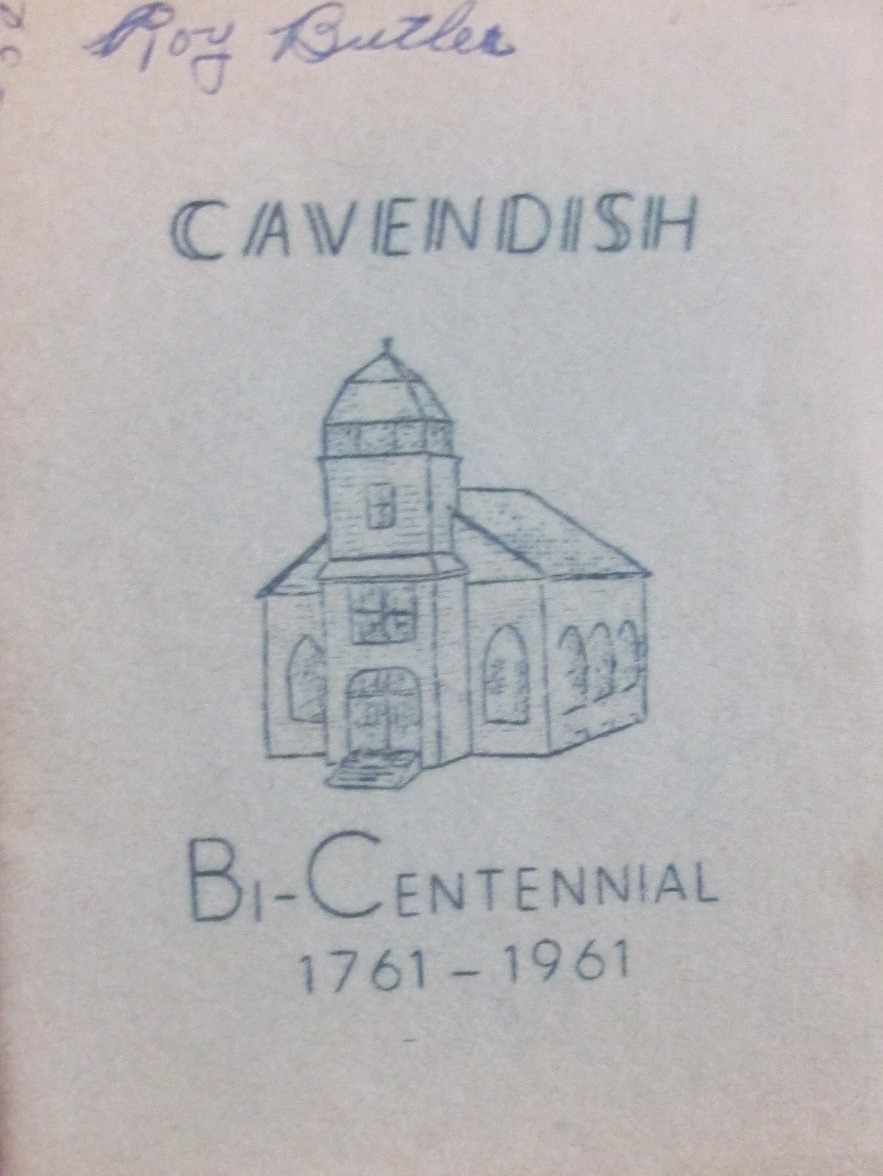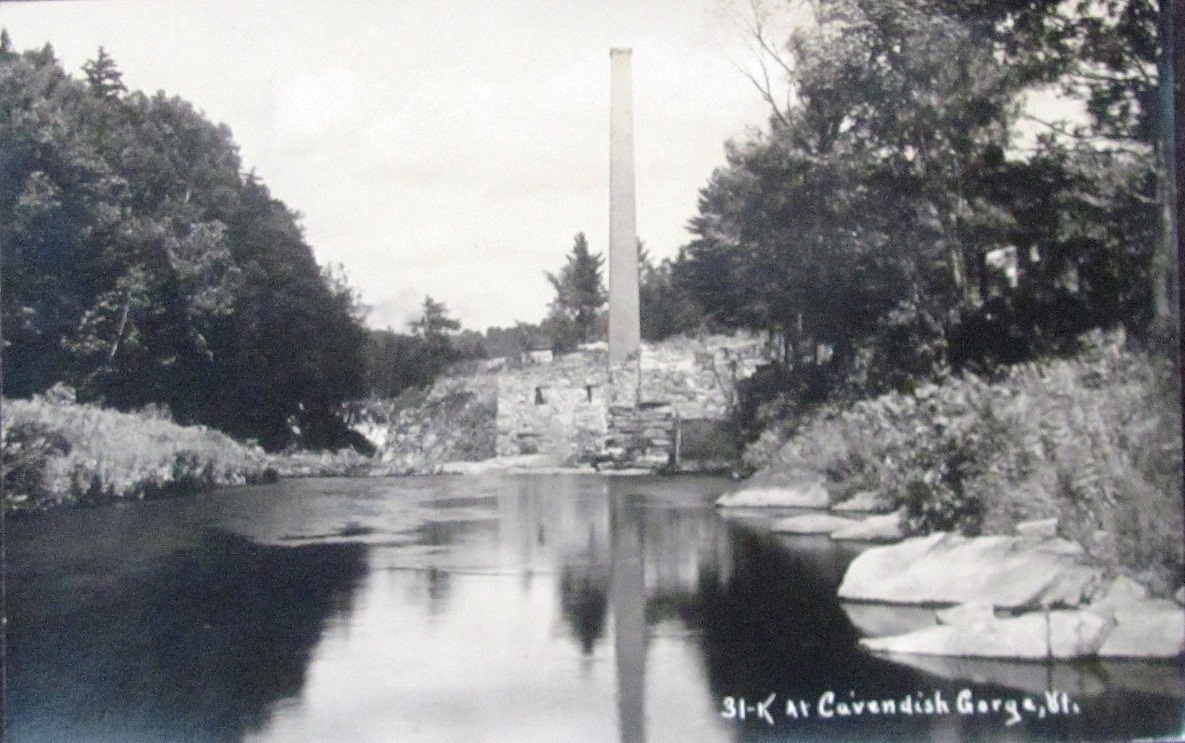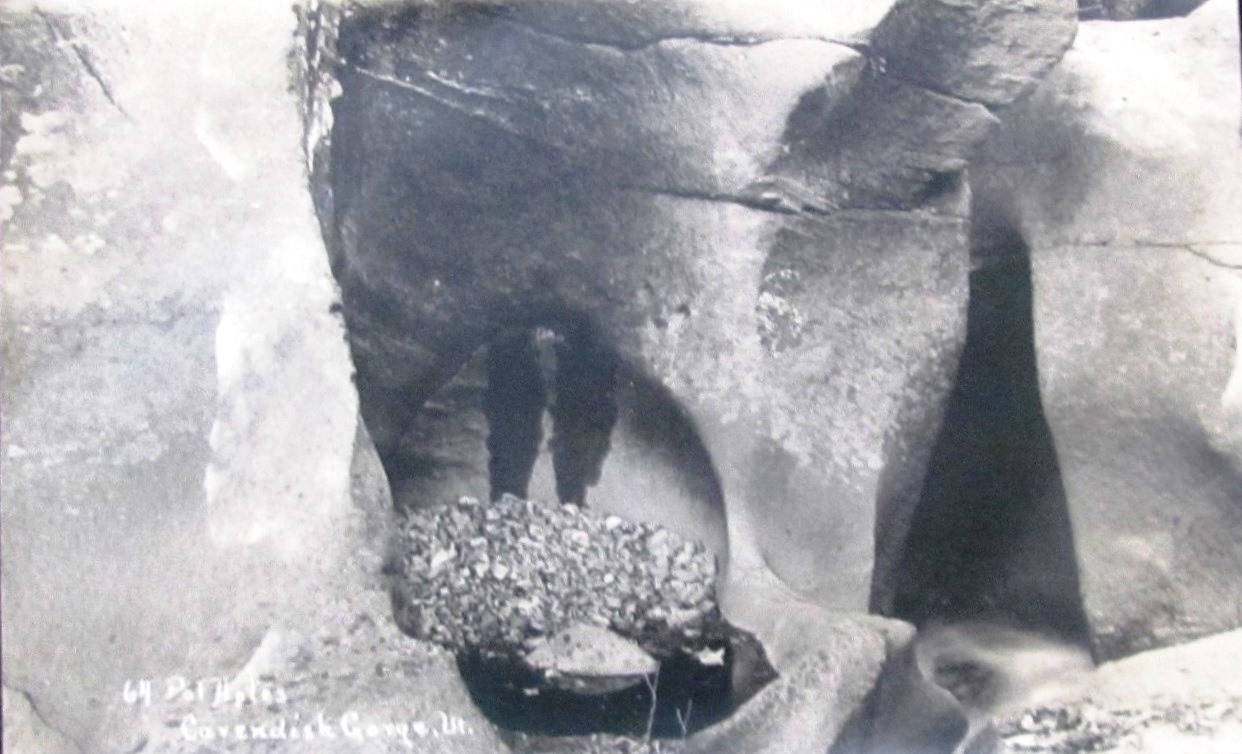
This past week has been for me what I call, “half a step behind.” I couldn’t seem to catch up. Sometimes it sneaks up on me, as it did this Sunday morning. I couldn’t think of anything to write about. So, I hope you find these ramblings interesting.
Cavendish Bicentennial
I have a little pamphlet for the 1761-1961 Cavendish Bicentennial. An excerpt is included below.
“Cavendish Gorge is the most interesting case of erosion ever recorded by the hand of time. The chain of lakes, once existing in the terraced basin of Black River Valley (where Cavendish, Proctorsville and Ludlow are located) had an outlet through Duttonsville Gulf. A high rocky barrier extended along the eastern end, through which the stream finally found a passage at lower level.
“‘Varnum’s Point’ is a name given one point affording a magnificent view. In 1841, as the story is told, Varnum Lockwood, working on the ledge, lost his balance and fell forty-five and one half feet into the swirling eddy below. His companions watched him buffeting with the waves, but he secured a hold on a jutting rock and drew himself from the water, almost in an exhausted state. He was beyond reach of the companions, who were unable to descend to his assistance, but inquired about his fall. Looking up, and feeling in his pockets, while water ran in torrents from his drenched person, he replied, ‘The fall didn’t hurt me much, but I’m darned ‘fraid I’ve lost my pocketknife.’ The spot has since been called Varnum’s Point.
 “Down the southern bank about 40 rods is ‘Lover’s Leap.’ Here the jutting mica schist stands out in a perpendicular precipice, one hundred feet above the foaming current. This is one of the wildest and most romantic scenes of nature.
“Down the southern bank about 40 rods is ‘Lover’s Leap.’ Here the jutting mica schist stands out in a perpendicular precipice, one hundred feet above the foaming current. This is one of the wildest and most romantic scenes of nature.
“A few steps further east and there is ‘Prospect Point.’ Here is shown the picturesque surroundings from which the gorge is made. A deep and long extended crack, visible at this point, may have been the first escape of the chain of lakes, afore mentioned.
“‘Eureka Cave’ is also an interesting point. From ‘Prospect Point’ passing down fifty rods of footpath, one will find himself near the entrance to the cave in the ‘Rotunda.’ This is a circular enclosure surrounded by smoothly worn and water washed ledge. Just around a jutting point of rock is the entrance to the cave.
“Less than a half dozen rods from the cave, the stream waters scooped out a pot-hole that is elevated about twenty feet above the river bed. This would hold a dozen persons. Leaning over the western edge (careful, now, not too far), of this rock basin, a beautiful view of gigantic boulders may be seen by the spectator. Notice the overhanging rocks, deeply indented niches and carvings made by water as it wends its way to the Central Vermont Power Plant below.”
I’ve been to the gorge several times in previous lives. I think many readers will have too. I asked at Kendall church if the Kendall brothers had been there. Affirmative. Lee even told about catching trout there.

Cavendish Gorge has been photographed many times over the years. In the 1870s, Frank Taft of Chester created stereo-views of Cavendish Gorge. I picture Frank with his large wooden camera and tripod, navigating his way down to take his pictures. It would have been cumbersome, as well as dangerous.
By 1907, the gorge had been photographed in postcard format. Harry Chapman, Charles Wellman, and Charles Gould are known to have photographed this area.
Indian summer
I was recently asked what Indian summer was. My understanding has always been that Indian summer was three consecutive days over 70 degrees, after a hard frost. The glorious weather we had last week was Indian summer.
This week’s old saying dates back to when Vermont was a red state. “Read the bible and vote Republican.”